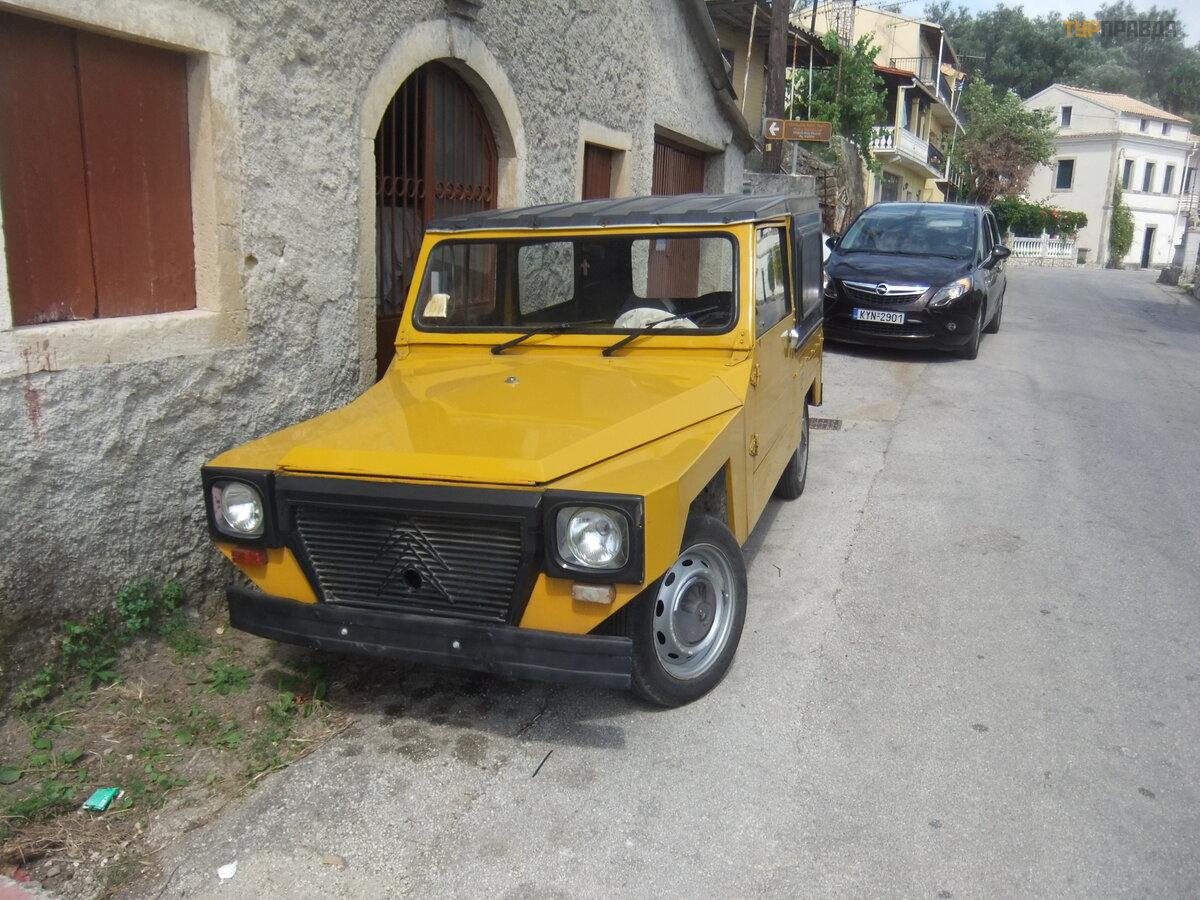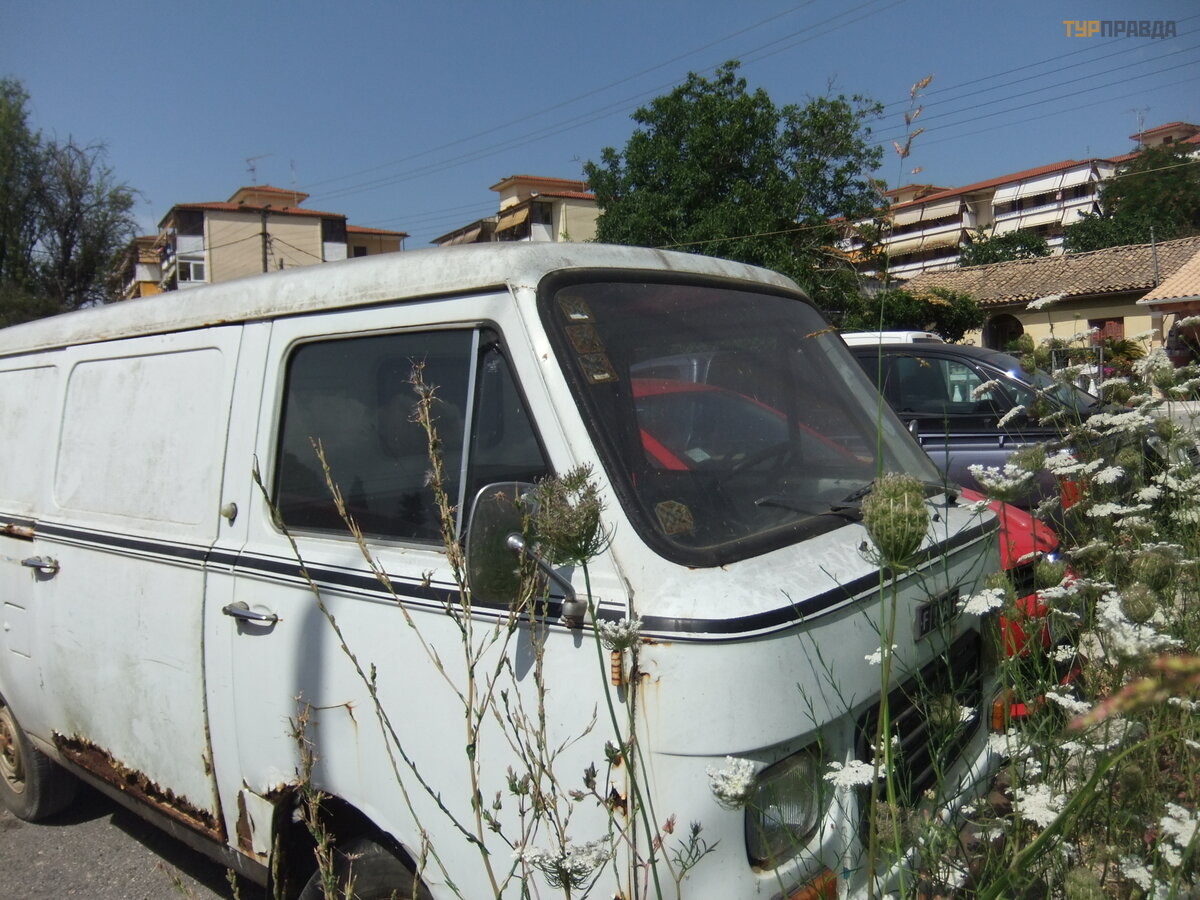Old cars of Corfu
Dear ladies! Forgive me. This is a very unfeminine review. I do not even advise you to start reading this. It's masculine.
For many, visiting a foreign country is not only a vacation, but also an examination of all kinds of interesting things. Nature. Architecture. Women. (Men). Showcase. But for me, first of all, it is the search for old cars. Well, I love them. For a long time I doubted whether such a story could be posted on the site. Probably not very possible. But very desirable. So I'm posting. For the king.
There was a time when cars were made entirely of iron, and 100.000 miles meant the end of running, not the beginning of costly problems. In those days, there were 3 ashtrays in the passenger compartment (and not a stupid cup with a lid) and the person himself decided whether to smoke or not. And yet this person, pressing the brake pedal, adjusted the length of the braking distance himself, and not all sorts of Chinese-made electronic bells and whistles. Overspeeding was monitored by fat, funny traffic cops, not soulless cameras. The "Turbo" badge on the trunk said that a turbine was attached to the mighty engine, which makes this engine even more powerful, and not like now, when "Turbo" is a bashful admission that the motor from the lawn mower needs help moving a one and a half ton trough.
I love this time and, therefore, when I see cars from those years, the mood rises.
Here are collected cars that I met on the roads of Fr. Corfu last summer.
Citroen 2CV. (De shvo). One of the most legendary cars in the history of the automotive industry. Nickname - "Duck". Start of designing in 1936. During the German occupation, the prototypes were buried on the territory of the plant. Years of issue 1948 - 1990. About four million copies were produced. If you count with modifications and with models built on its basis, then a little less than nine million. This car was in the garage of Brigitte Bordeaux, Alan Delon, Elvis Presley and Sophia Loren.
The photo shows one of the latest modifications. Charleston. Mid eighties. Completely working car. A man on it delivered water to nearby restaurants.
Mazda 929. ( Luce) 1977 - 1981. Large, comfortable car with a luxurious interior. In addition to the gasoline engine, connoisseurs could order a Wankel rotary engine. But this, in my opinion, is not the main thing. See how clean and concise the lines are. The car is beautiful not in decor, but in shape. The same were the big, but light and elegant Sotka - Herring, (Audi) strict and bourgeois Granada, (Ford), serious two hundred and forty-fourth, (Volvo) and, of course, the ageless Cedric and Gloria. (Nissan). All these cars are like real women. Without tattoo makeup, Botox and silicone. They are beautiful with pure, natural beauty. Both these women and these machines age beautifully too. And we look after them. Both cars and women. It is they who excite us, not these disposable Hyundai and iPhone girls.
Citroen Dyane. One of the modifications of De Shvo. More sleek, more comfortable (windows in the doors are already sliding, not folding up), but in my opinion less charismatic. Early eighties.
Namco pony. Products of Greek engineering. It was produced in Thessaloniki from 1975 to 1983. The same De Shvo was taken as the base. The Greeks, together with the French, managed to create a very interesting car. Let's just say - a car for the poor for all occasions. Exported to 14 countries, including the USA. Only in Europe, 17.000 units were sold. In 1980, in Germany, it cost about 11.000 marks.
Mercedes Benz L 4500. Years of production 1939 - 1945. Then a certain failure until 1954, when the successor L 312 was launched into the series. But this is not 312, although it is similar. There is most likely a transitional model of the year of the fiftieth. The general design is like that of the three hundred and twelfth, but some elements (say, the upper position of the wipers) are like the L 4500. Now this fascist is not on the move, but it has not grown into the ground. So not so long ago he was still working.
Fiat 126. Years of production 1972 - 2000. Produced in Italy, Poland (mostly), Austria and Yugoslavia. Produced about 7 million pieces. One of the smallest production cars. Indestructible, six hundred cubic meters (23 hp) engine was located at the rear.
The copy in the photo comes from the eighties, but in working condition. On it, a young couple arrived at the supermarket. The tiny salon is quite cozy and relatively comfortable. Polish joke of those years. Two Poles are coming to Malukha. (Polish nickname Fiat 126 R). Dialogue - Kazimir, we have been driving for a long time, but this concrete fence does not end in any way. - Bzdyshek, this is not a fence. This is a border.
Skoda 120. The last rear-wheel drive, rear-engine Skoda. And for good, in general, the last true Skoda. After her, Favorit, already created together with the Italians, went into production, then Fabia and marriage with the Volkswagen group. But it went to Skoda, rather to the benefit. Years of production 1976 - 1990. Belongs to the owner of a small gas station in the mountains.
SIMCA - Aronde (Type 90 A) Years of production 1955 - 1958. The first car of the Simca brand, produced according to the most modern (American) technologies at that time. It's just that the owner of the company visited the United States and was a little offended by how artisanal car production in Europe was at that time compared to American factories. And I bought machine tools and technologies from amers. The most elegant car turned out. But the copy in the photo is most likely not on the move.
Look what she was like. Young, eccentric, but not impudent, slender, but with forms. Flawless.
And yes. How the world has changed. What do you think, what did the search engine give me for Simka?
Seat Marbella. Place of production - Spain. Pamplona. Years of production 1986-1998. A clone of the Fiat Panda created by the brilliant Giorgetto Giurjaro of Ital Design. It was based on the ideas of the Citroen De Chvaux and the Volkswagen Beetle. Simplicity, cheapness and ugliness. The car turned out to be 100. At one time, it won the title Car of the Year.
Interestingly, Steyr Daimler Puh (which Geliki makes) developed an all-wheel drive transmission for this car. And Panda became the most inexpensive all-wheel drive in the world. And Marbella was one of the most inexpensive Western European cars.
Everyone knows Mini. Even those who don't know the true 1958 Mini, designed by the unrivaled Alec Issigonis, still know the Mini. New Mini or Mini from Mr. Bean sketches. And then there was Maxi. Full name - British Leyland Limited Austin Morris Maxi. The only thing missing is Hyor Magisti. It was one of the first five-door hatchbacks. It was the first hatch with a five-speed gearbox. It was the last car of Issigonis. Years of release - 1969 - 1981. Brilliant car. Resounding success. And the decline of the British auto industry. The quality was below par.
British Leyland died, burying such legends as Austin, Triumph, Morris, M Gee, Daimler, Princesses. Rover lived a little longer, but also died. Mini, Jaguar and Range Rover rescued by foreign buyers. But this is no longer the British auto industry.
Volkswagen Beetle. What else to say? Just a beetle. (Kä fer). Years of production - 1938 - 2003.21, 500.000 copies were produced. Designer Ferdinand Porsche. The author of the idea is an unpleasant person. with an unpleasant middle name Aloizych.
Toyota Corolla Deluxe. Apparently this is the end of the seventies. The car is on the move.
Fiat 600 T. Mid-seventies. The history of this car is as follows. In 1955, the smartest Dante Giacosa created the Fiat 600. (Our hunchbacked Zaporozhets looks like him. ) The car became so popular that it is considered one of the symbols of Italy. But he was small, and Italian families are large and often not rich. For this reason, based on the Fiat 600, the Fiat 600 Multipla was created in 1956. It was a very micro bus with a rear engine. It is considered the forerunner of the current MPV class. Well, a little later, on the basis of the Fiat 600 Multipla, the Fiat 600 T was made. A light commercial van with the same engine of 600 cubes.
The specimen in the photo is lively and cheerful.
If at least one traveler is interested in my story, I will continue.
And ladies. . . Don't get mad.
Continued here >>>






















































